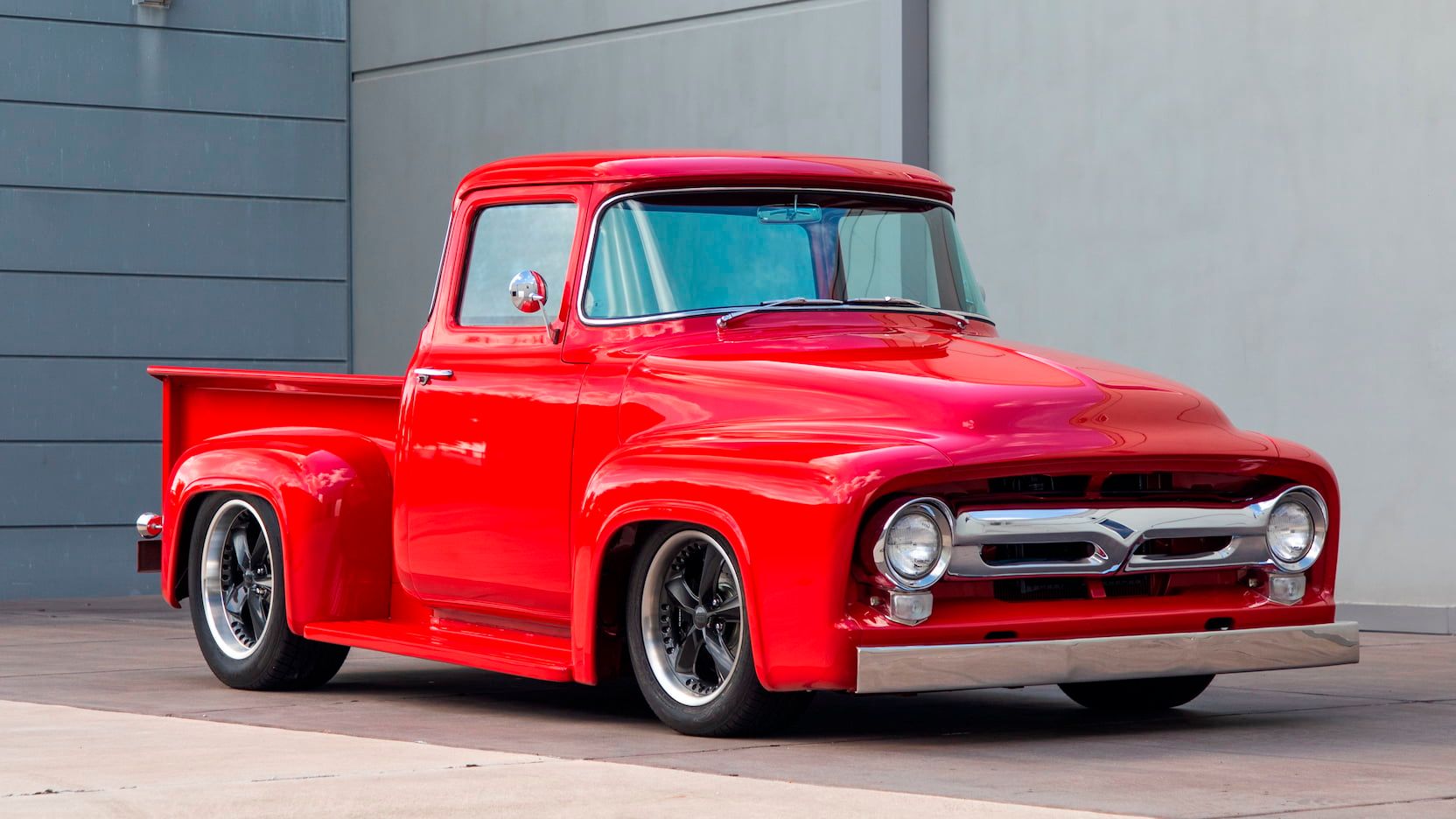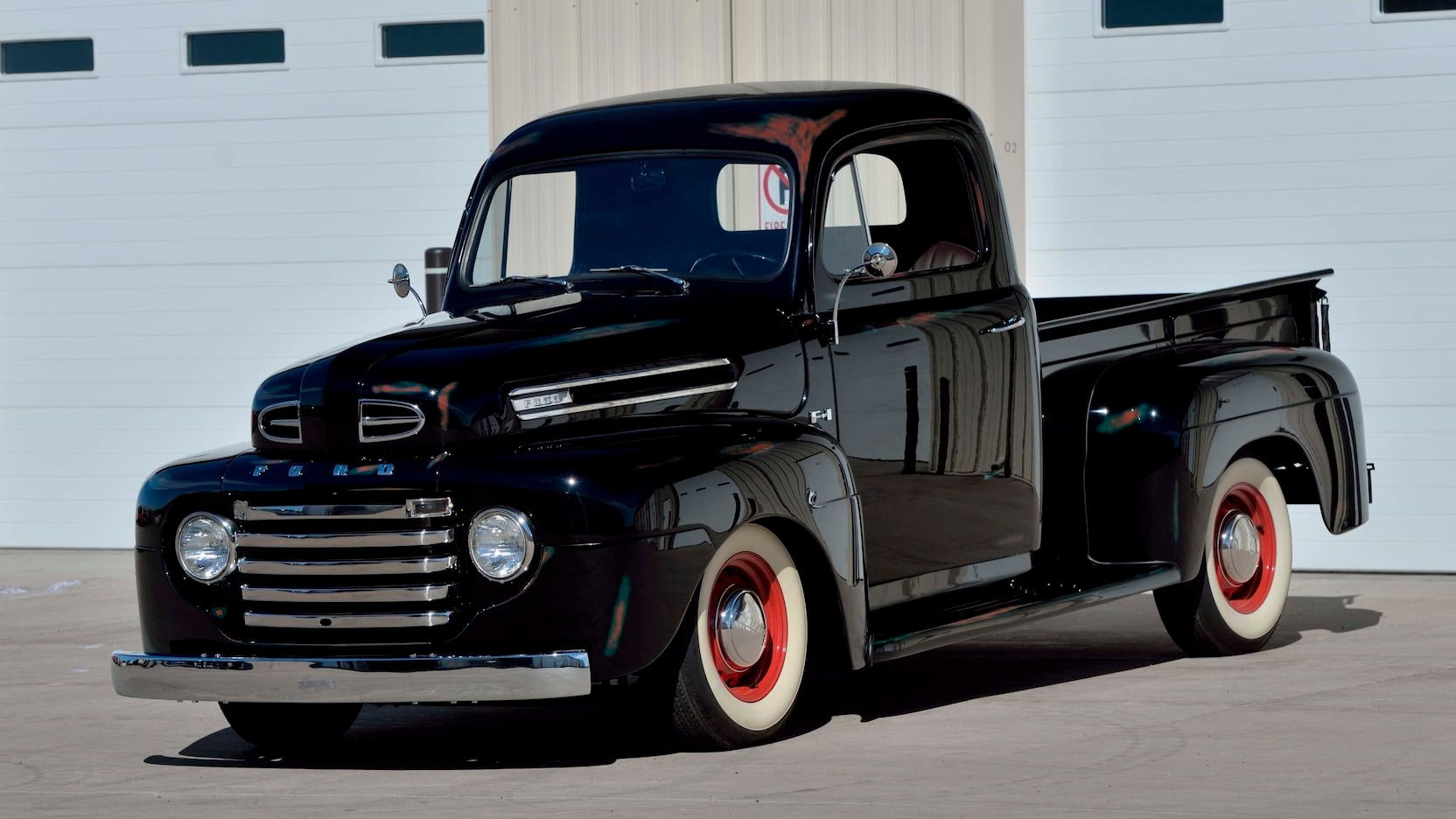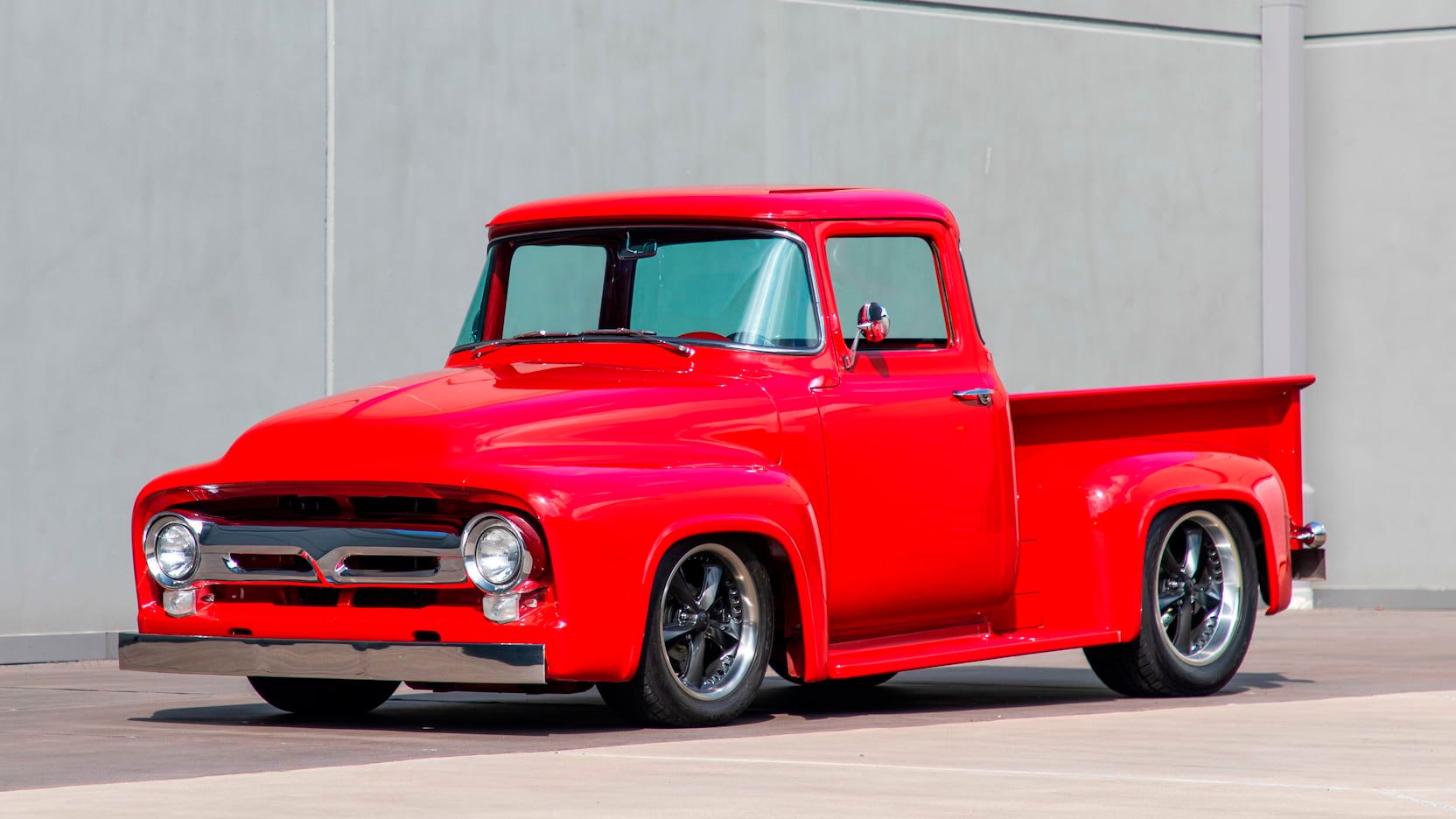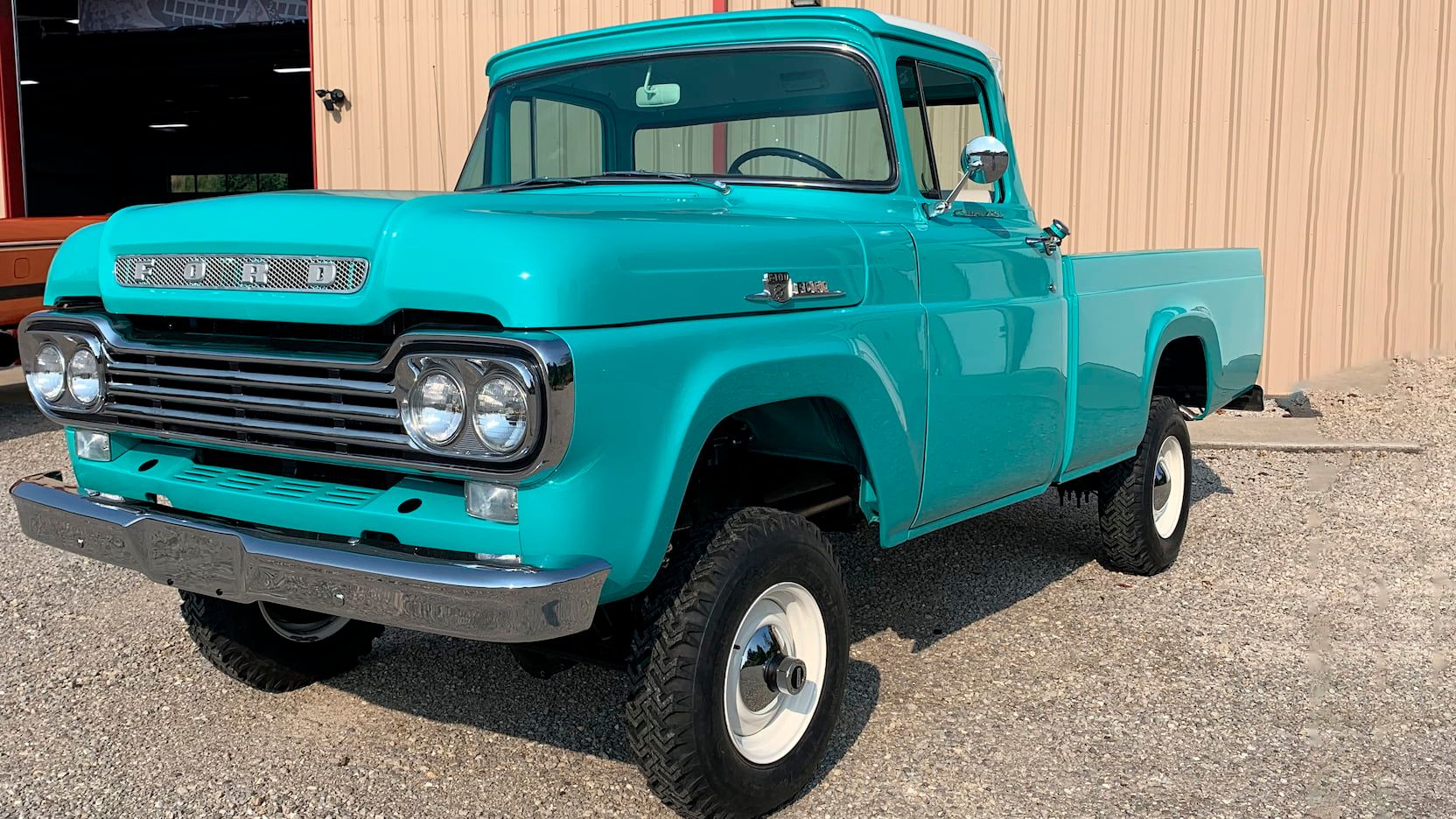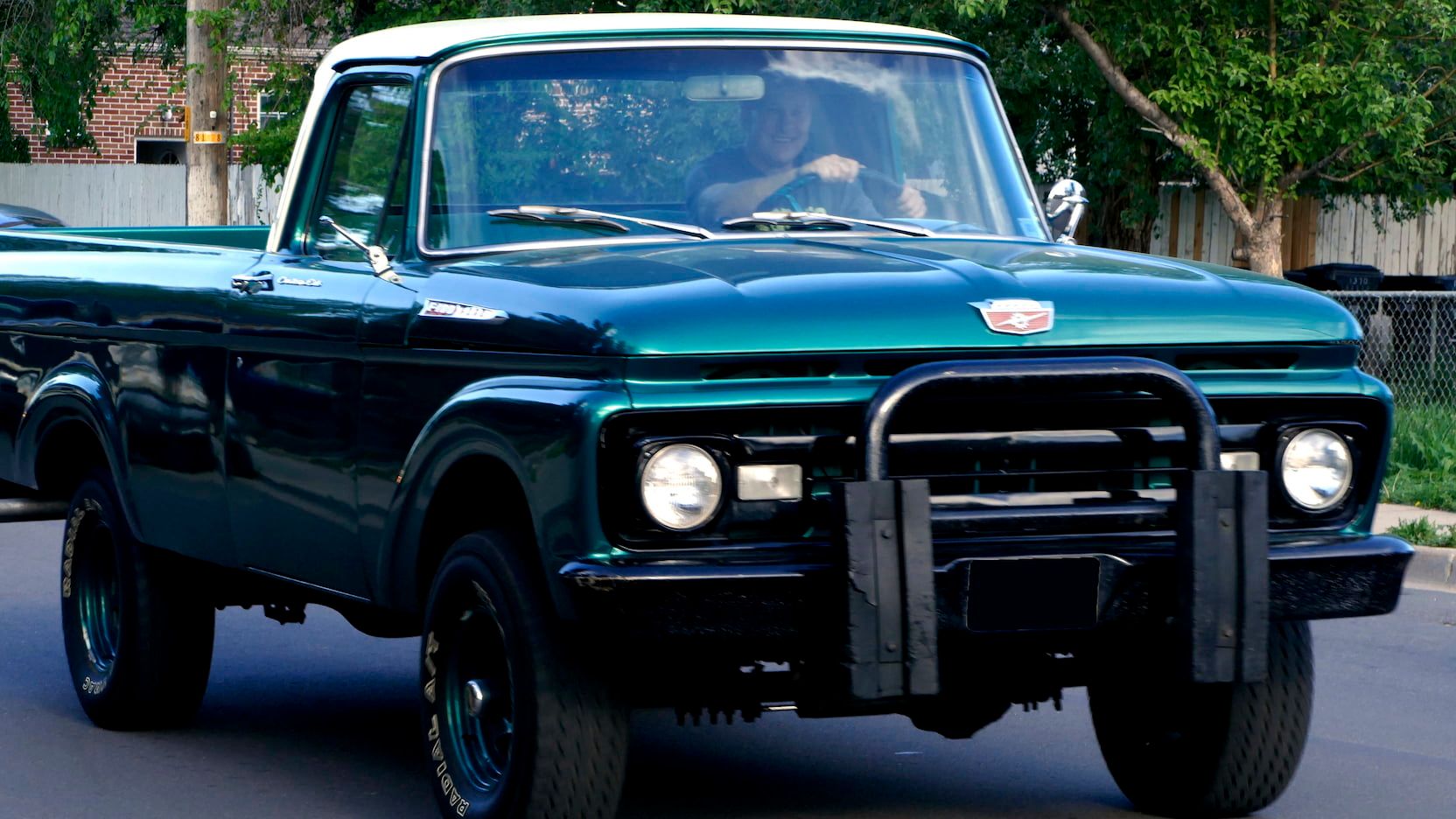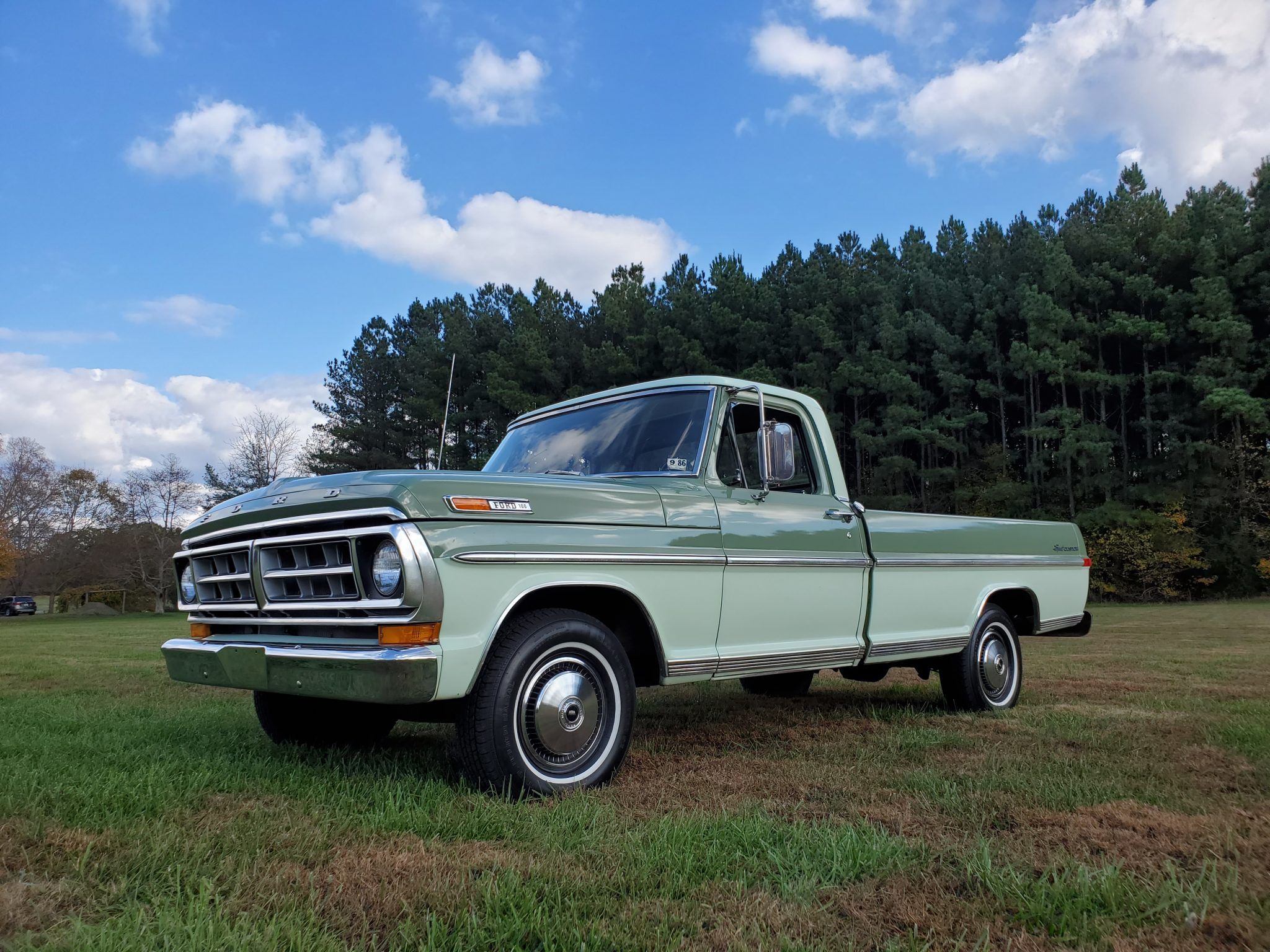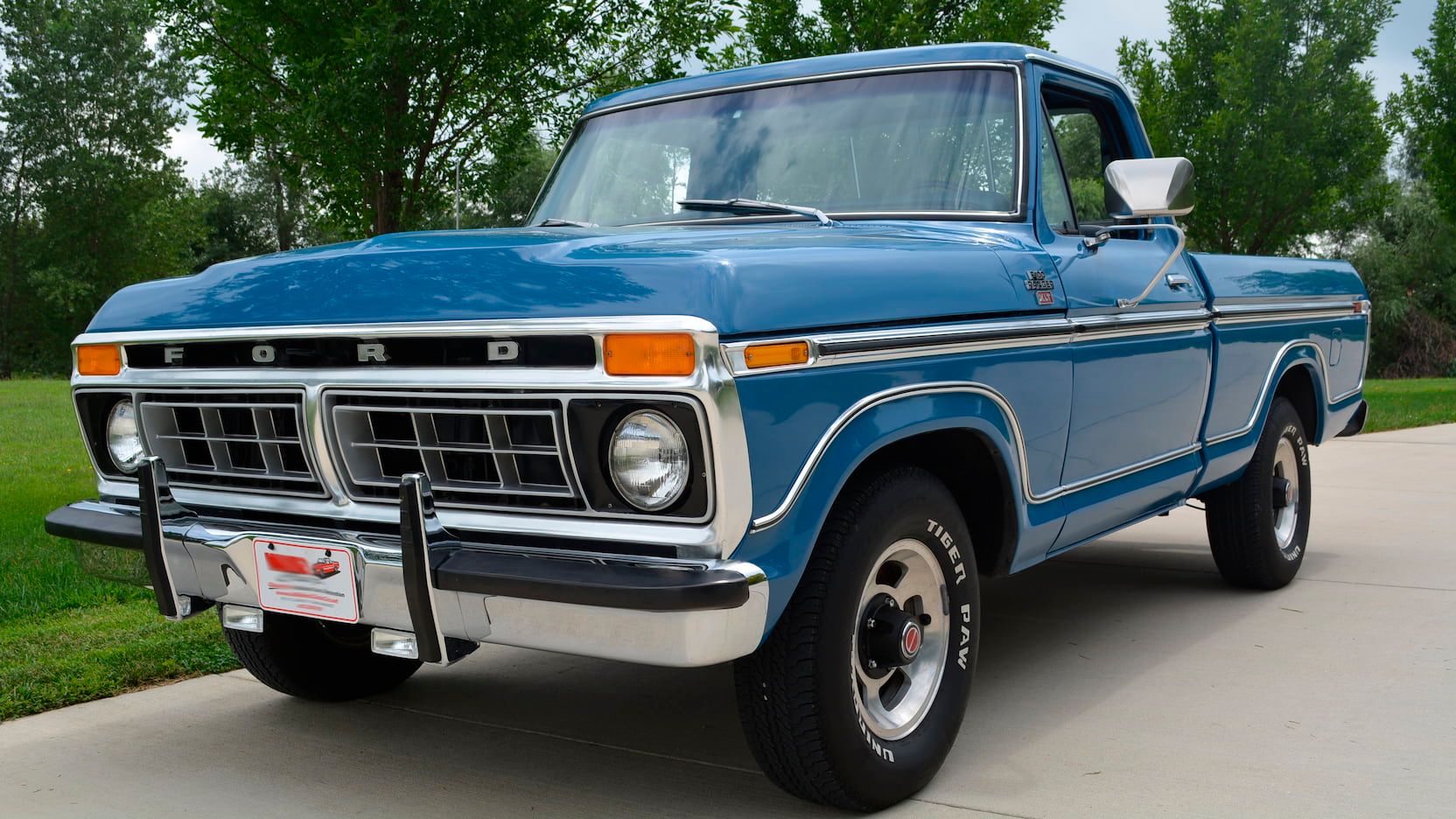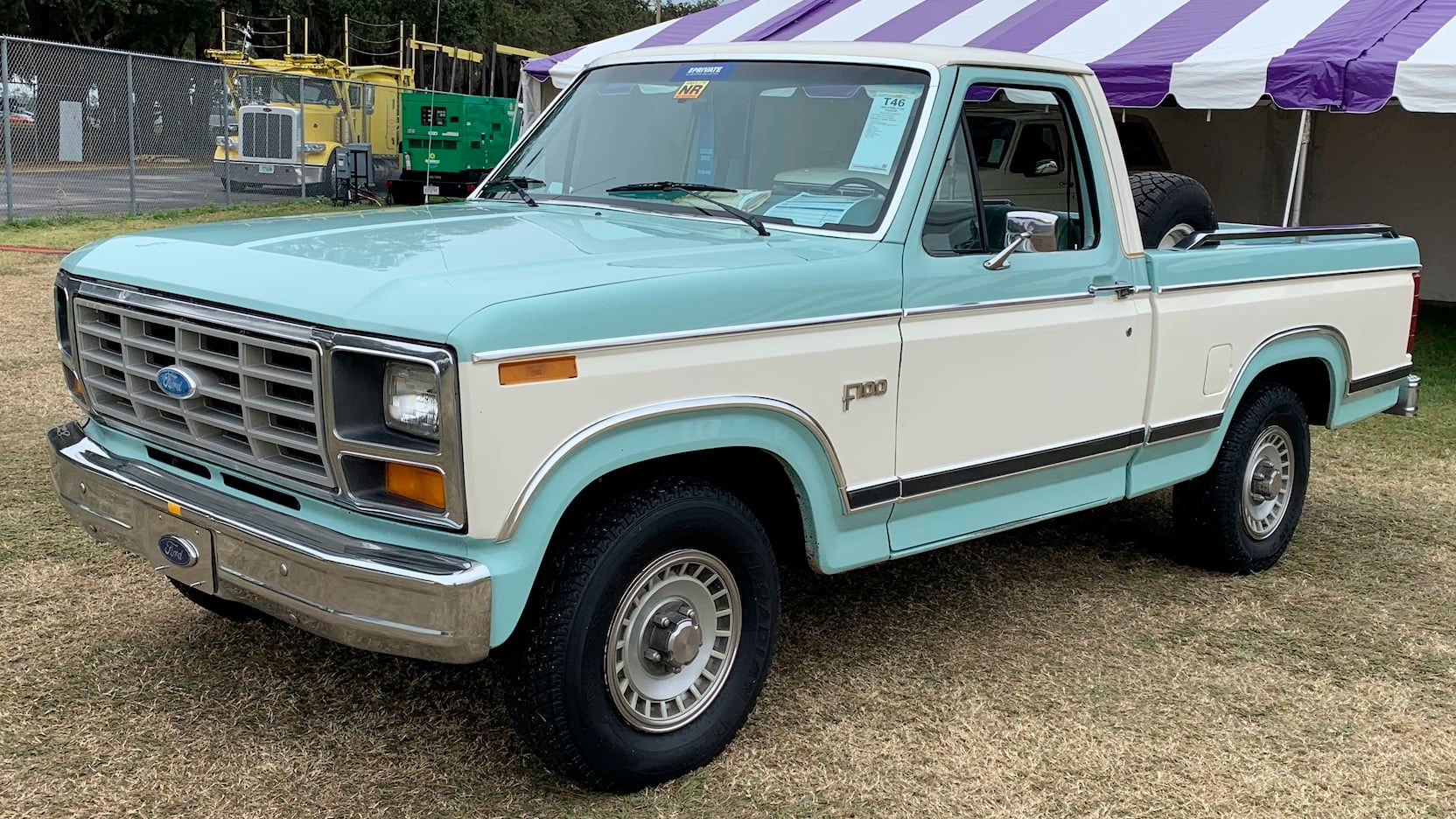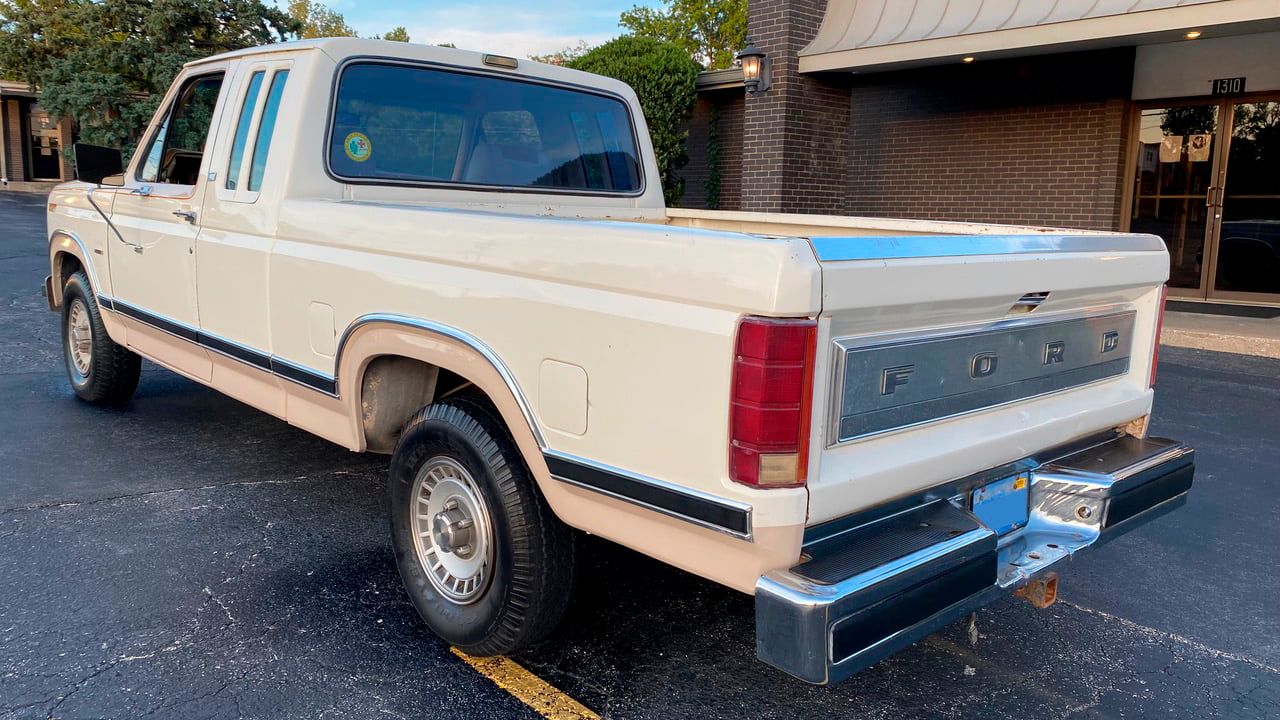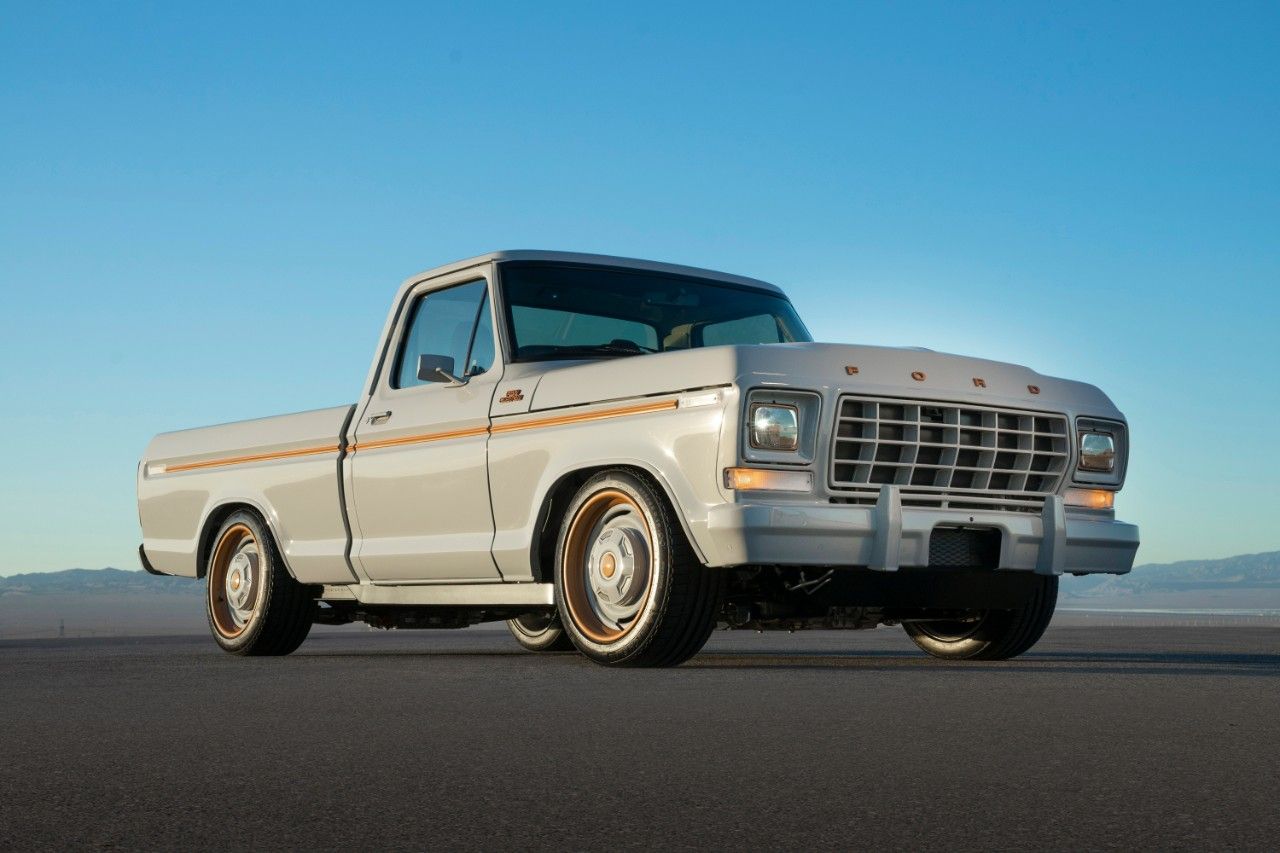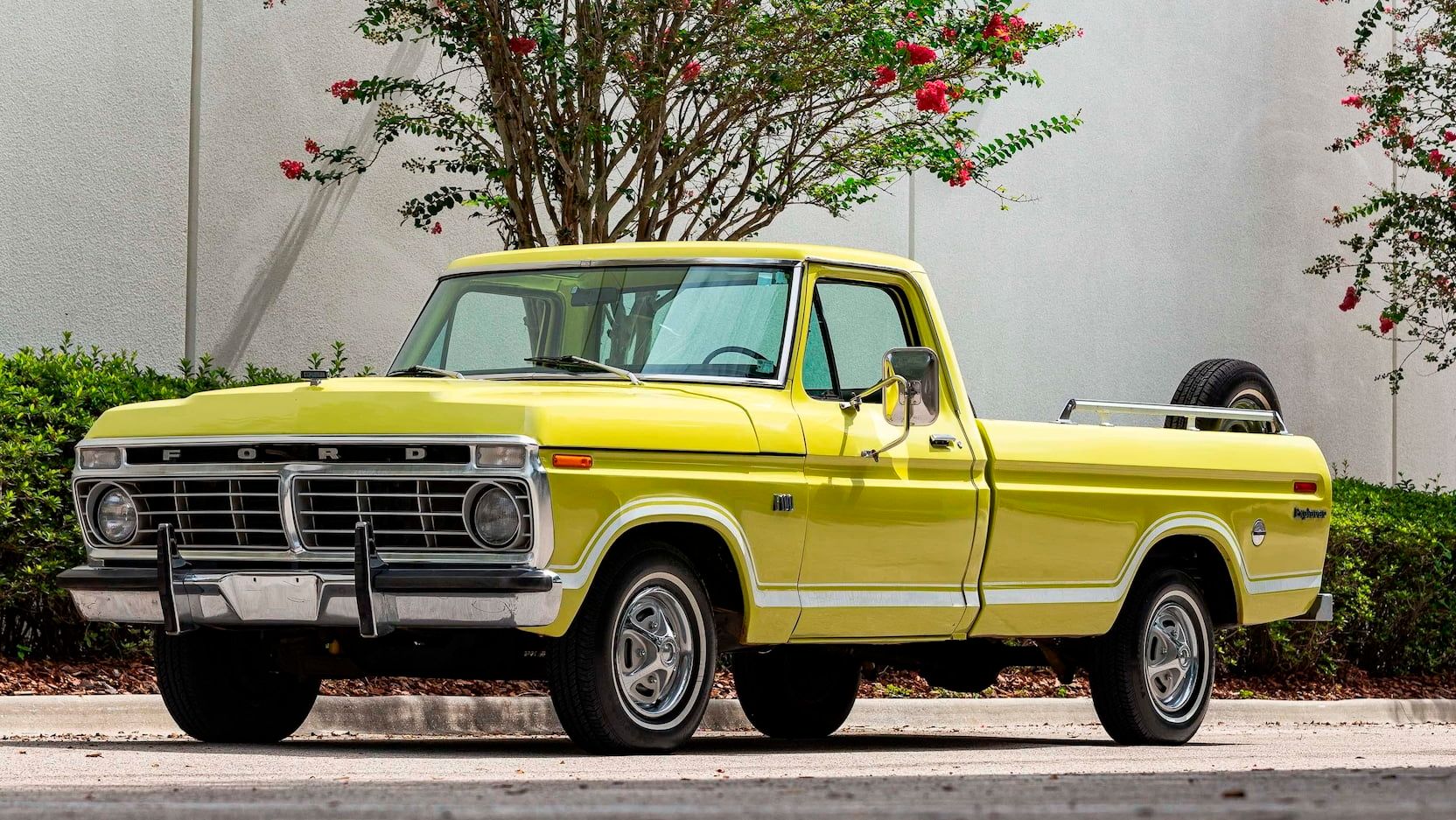Today, the Ford F-Series is the most popular selling pickup in the Ford lineup and has the distinguished title of being the best-selling truck for 45 years. This not only means that you love Ford trucks, but that the majority of the people throughout the nation do as well. Before the F-150, a group of trucks started back before World War II, but they were not truly trucks yet; not until the first generation of trucks based on Ford's own chassis were built after the war. That is where the actual history of the F-100 starts, beginning with the first generation in 1948.
10 The Ford Truck Before The 100 Series
The Ford F100 has a long and fabulous history, starting back just after World War II when the truck wasn't an F-100 at all, but rather a simple truck known as the F1. This was back when a truck was a truck, designed to work and haul, with nothing much more than a seat, steering wheel, and a manual gear shifter. There was no need for anything else because if people wanted a comfortable ride, they would use the car. This is what the first generation of Ford trucks was all about, which is why it was known as the "Bonus Build Truck."
9 The Changing Of The Letters
When Ford celebrated its 50th year, that all started to change. The most significant was when the second generation began production, renaming the well-known truck as the 'Ford F-100'. It was no longer known as the "Bonus Build Truck." Ford dubbed this generation the "Triple Economy Series" because the lineup had three sizes of trucks, the F-100, F-250, and F-350. This generation of trucks also brought some changes that created a more comfortable, user-friendly pickup by adding movable seats and an automatic transmission. Safety improvements also came with the second generation, offering power brakes as standard and seat belts as optional equipment in 1956.
8 The Integration Of The Front End
The third generation of Ford F-100s brought on some more changes. The front cab, hood, and fenders all widened to integrate them into one section of the body framework. This followed in line with the other two of the big three in Detroit, as well as eliminating the curved fenders and box. Straight lines began to be the design for the F100, offering two different box styles, the Flareside and the Styleside (which was wider and offered eight-percent more cargo space.) In 1959, Ford added four-wheel drive as an option, making it the first truck on the market to provide this critical upgrade.
7 The Beginning Of The Integrated Pickup
Even though the generation before began the transition to integrated bodies, the fourth generation has been dubbed the "Integrated Pickup." The styling change was dramatic, to say the least, but one that has been carried on throughout the models today. The lines of the box were now a continuation of the ones on the cab, and the top of the box was equal to the top of the hood. However, the designation of being an "Integrated Pickup" came from the fact that the Ford manufacturers welded the cab and frame together before installing them onto the frame, removing the gap that used to be present between the front and the box.
6 The Generation When Comfort And Power Combined
The fifth generation of F100s came out at a time when muscle cars ruled the streets. People still needed to be able to haul large loads and travel through rough terrain, so Ford combined both worlds by offering larger engines under the hood of this generation. Additionally, the interior became more comfortable, offering more room due to the bigger cabs and optional air conditioning. The rounded outer design gave way to a more squared-off front end, and the hood sloped downward from the windshield at a slight angle. The "Bumpside Truck" was a complete redesign that boosted sales and created a look that would last for decades.
5 The Beginning Of The End
The sixth generation was a time of significant change for the F-100. The four-door version had been around for a while, but in 1974, the Supercab was produced. This is the popular type today that offers a back seat for passengers, but it does not require full-size doors to gain access. Instead, the front seats fold down, allowing the passenger to climb in. This truck generation has been called the "Dentside Ford" by truck enthusiasts, and in 1977, it took the title of the best-selling truck in America. The most significant change for the F100 was not in the truck itself but rather in Ford's introduction of the F-150 truck, which had a bigger payload capability with the same looks and comforts. It was the beginning of the end for the base level F-100.
4 The Final Run For The F100
The seventh generation of the F-100 was the last ever made. In 1983, the F-150 took over as the lowest-level offering of Ford pickups. The beginning of this generation brought on a complete redesign of the truck, creating a square body with a flat front grille. It also brought on the first usage of the blue, round Ford emblem placed in the middle of the grille. The interiors continued to be produced with the occupants in mind, making the trucks lean more towards everyday use rather than being driven only when work and play needed to be done.
3 Handing The Torch To The F-150
Sadly, the F-100 became a truck that no longer had a place in the Ford lineup, but that is the direction Ford decided to take it. Instead of upgrading the F100 to meet the demands of the public, the company created a new truck that offered all the same amenities, including a low price, but could handle more weight when hauling or towing. Because of this, the company, along with the consumers buying the truck, felt that there was no longer a need to go below the weight limits offered on the F-150, so the long-running F-100 was retired.
2 F-100 Eluminator
Ford truck enthusiasts became very excited in November 2021 because of the new concept truck shown in Las Vegas, known as the Ford F-100 Eluminator. It would be the future of electric trucks, featuring the same system found in the new EV Mustang, including the battery pack that would run the entire pickup. The motor and wiring were made available to buy as a new crate motor, but unfortunately, the F100 used as the concept truck will never be available for sale. Ford has no plans to assemble an older-style truck with a new-style motor for mass production.
1 F-100 Explorer Package
Throughout the long 35 years of production, the F-100 was offered with numerous packages, trim levels, and unique designs, but the one that stands out the most is the Explorer Package. This package was available in the last three generations of the truck, offering more luxury and comfort for the same affordable price as the base level F100. There were up to three options within the package that consumers could choose from, allowing them to customize the truck how they wanted it. The truck was starting to become more of a daily driver and less of a strict work truck, so adding options without increasing cost helped boost yearly sales and increased the truck's popularity with fans from all walks of life.
FAQ
Q: When Did Ford Stop Making The F100?
The Ford F100 was discontinued in all American markets in 1983 when the F150 took over completely. The lower hauling and towing capabilities of the F100 were no longer necessary once the F150 finally took hold within the market.
Q: What Does F100 Stand For?
Many people that are not truck savvy think that the F100 designation is nothing more than a nameplate to differentiate them from the other models. The truth is that the numbers show how much weight capacity the truck has. The F100 has a 1,000-pound payload, the F150 has a 1,500-pound maximum, and the F350 has 3,500-pound payload limits.
Q: Why Is It Called A Half-Ton Truck?
The F100 had a payload limit of 1,000 pounds, which is exactly one-half of an entire ton. This may be confusing because the F150 that can haul 1,500 pounds is also called a half-ton truck, which can be attributed to marketing ploys that use a ton in the advertisement. Car and truck manufacturers have simply continued to use the ½ ton designation because it sounds better to the buying customer.
Q: When Did The F100 Start Giving Way To The F150?
1975 was the first year the F150 was produced, which immediately started to take sales away from the F100. The problem with eliminating the production of the F100 right away, though, was that the public had grown accustomed to it being the number one selling truck. The transition had to be made slowly to prevent a huge loss of sales during the first years of F150 production.

